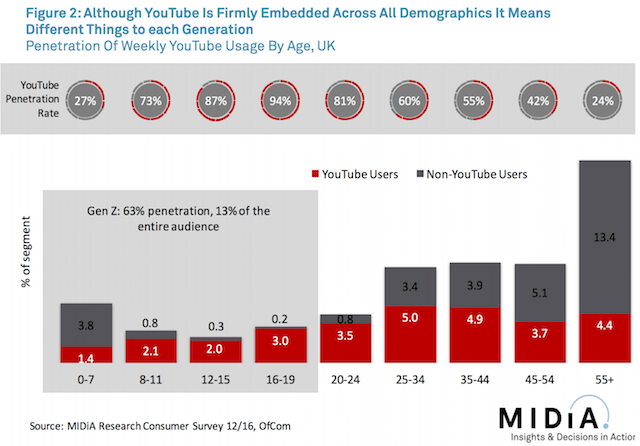
YouTube remains a critical player in the media lives of this age group. For ages 8-11, YouTube penetration is 73%. The corresponding rates are 87% for ages 12-15 and 94% for ages 16-19. Beginning around age 20, YouTube penetration rates start to fall off, and the age 25-34 group falls off notably at 60%. The report projected that the heavy use of YouTube among the current younger generations will stick as they get older because of how entrenched it is in their present-day media consumption.
Music videos are a large chunk of YouTube viewership for this demographic. It is the second most common type of video for all three under-15 age groups, trailing clips. The respondents answers showed music as a highly social activity. For the age 16-19 group, 85% said that music is an important part of their lives, compared with 77% across all ages. 74% of the 16-19 group said music was all about going out and having fun, although only 53% of all ages agreed with the statement. Also, 67% said that music was something they’d consider paying for in the 16-19 age group, whereas just 56% of overall consumers said so.
Finally, the MIDiA report looked at the weekly use of different music services, contrasting the rates for all respondents with that for ages 16-19. Spotify topped the list for the Gen Z age group at 53%, while only 18% of the all ages group did. Video service Musical.ly is almost solely a teen service, with 12% of age 16-19 using it and just 1% of the all ages respondents using it. The response rates reflected that free access isn’t the only driver of use, with long-time free service SoundCloud at 6% weekly use and paid-only Apple Music with 12% use.

